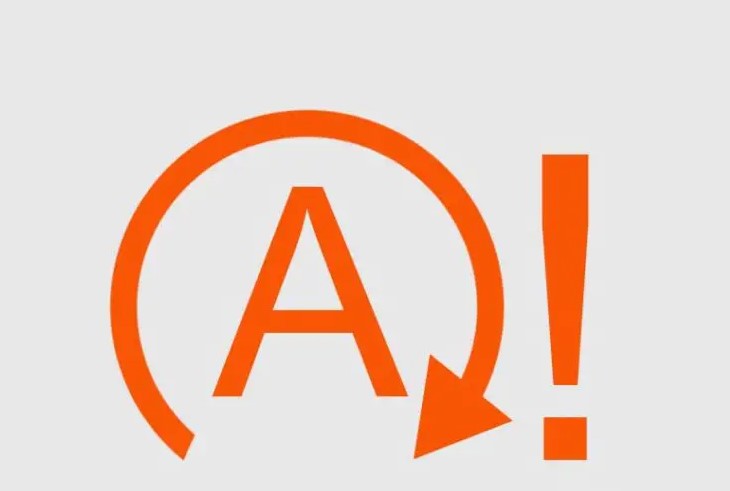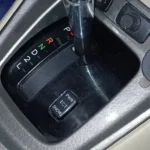The Chrysler Pacifica has an advanced dashboard diagnostic system that alerts motorists of potential issues via warning lights on the dashboard. One of the warning lights that could attract the attention of Chrysler Pacifica A With Circle And Exclamation Point
It can be caused by different causes. The most frequent reason is an auxiliary battery that has failed to function properly. that powers the vehicle’s equipment if the engine is turned off during an ESS occasion. If the battery of the auxiliary is damaged or depleted, then the functioning of the ESS is compromised, which is why the light will come on.
This article will go over the purpose of this light’s purpose, the possible causes, and the required steps to resolve the issue quickly. Understanding and dealing with warning light matters is vital to making sure your Chrysler Pacifica has a long life and performance to its maximum. Let’s dive into the specifics!
Contents
What Does the Chrysler Pacifica A With Circle and Exclamation Point Mean?
The warning light with A within a circle and an exclamation point in front of it on the Chrysler Pacifica is a sign of an issue or malfunction related to the Start/Stop System (ESS). If this is the scenario, you will see a “Start/Stop unavailable” or “Start/Stop Unavailable Service Start/Stop System” message could be displayed on the Chrysler Pacifica dashboard. Additionally, you might be able to notice some symptoms, like the auto stop-stop system not activating when it should or the engine not restarting properly during the ESS event.
It is vital to deal with the light warning promptly to avoid any further problems and possible harm to the battery as well as the electrical systems.
Common Reasons for the Warning Light Activation
Many factors can cause the start-stop system (ESS) malfunction that triggers an alarm on the Chrysler Pacifica A with a circle and exclamation point warning lights. The most frequent causes are:
Low Battery Charge
One of the most common causes of ESS problems within the Chrysler Pacifica is a low charge in the primary battery or the auxiliary one. Auto start-stop relies on the battery’s power to start the engine seamlessly in stop-start situations. If the battery’s charges are not enough, then the ESS might not be able to engage appropriately, thus activating an alert light.
Furthermore, the main and secondary batteries within the Chrysler Pacifica can experience wear and a decrease in capacity as time passes. The batteries that are getting older may not supply enough power to the ESS, which can lead to malfunction.
Faulty Auxiliary Battery
The battery that powers the auxiliary is essential in helping to support the ESS by providing power to electrical components in the event that the engine is turned off. Suppose the battery in the auxiliary is faulty, weak, or damaged. In that case, it may not supply enough power to work to the ESS effectively, leading to the system’s temporary or even permanent disconnection.
High Electrical Load
The ESS system could be temporarily shut off when the electrical load of the vehicle is excessive. For instance, activities like air conditioning, infotainment systems, heated seats, or power-hungry electronic devices create a large load for the power system. The ESS could be turned off temporarily to guarantee that the other components of electrical power.
Weather Temperature
Extreme weather conditions could significantly impact the battery’s performance, no matter how hot or cold. This can reduce the capacity and efficiency of the battery, which affects the ability of the ESS to start the engine efficiently when it is stopped.
Battery Issues Due to Long Inactivity
When Chrysler Pacifica is left unused for long periods of time, it is possible that the batteries will discharge, which can affect their performance. Inactivity for long periods could lead to a reduction in battery capacity as well as ESS malfunctions.
Software Issues
Sometimes, software issues or calibration mistakes within the ESS system could cause problems. These issues could require adjustments to the software or recalibration to correct the issue.
Faulty ESS Components
Issues with relays, sensors, or other parts connected with sensors, relays, or other components of the Auto Start-Stop System (ESS) could cause interruptions to the operation of the system, resulting in the flashing of a warning lamp.
Possible Solutions for the Chrysler Pacifica: A With Circle and Exclamation Point
If you’re getting the A with an exclamation point and circle warning on the dashboard of your Chrysler Pacifica, don’t worry! If you follow these systematic troubleshooting procedures, you will be able to quickly identify the root cause and resolve the issue at your own pace.
Check the Battery Health

Begin by examining the health of both primary and secondary batteries. Please make use of a digital multimeter to check their voltage. If the car is completely shut down and the battery is fully charged, it typically reads about 12.6 volts. If the reading of voltage is much lower, then this is a sign that your battery may not be strong enough or fully charged.
Conduct a load test on the battery with a load tester for batteries to evaluate the battery’s health. This test can help assess the overall health of the battery and capacity when under load. To conduct this test, connect the load tester for each battery and then apply an amount of load that is equivalent to the time it takes to start the vehicle. Take note of the voltage reading when you perform testing load. When the voltage of your battery drops dramatically and does not recover to an average degree this could indicate an inefficient or damaged battery.
During the test of load, be aware of any unusual sounds or indications of battery malfunction like leakage or excessive heating. These could be further signs of battery health problems.
If you notice it is damaged or defective, then replace the battery with a fresh one to fix the problem.
Inspect the Auxiliary Battery
Find the auxiliary battery within the engine compartment, close to its main battery. Check the battery’s connections to ensure they are well-maintained, securely connected, and corrosion-free. The corrosion on the terminals could result in weak electrical connections that can impact the battery’s performance.
Check the Auto Start/Stop System
To test for the Auto Start-Stop System (ESS) in your Chrysler Pacifica, it is possible to use an OBD II scanner to look for errors. The device is made to connect to the car’s onboard diagnostic system to retrieve essential details about the ESS or any other possible issues that may arise in the vehicle.
Begin by finding the OBD-II port on your car, typically located under the dashboard of the driver’s side. Connect into the OBD-II scanner to the port, then turn to turn on your ignition. The scanner will then connect to the computer system in the vehicle and look for error codes.
After the scanning process has been completed and the scanner is fully operational, it will display any error codes that are detected on its display. Every error code detected by the OBD-II scanner is a sign of specific issues within the vehicle’s systems, such as those that control the Auto Start-Stop System (ESS). These codes can offer important information regarding the issue’s nature, allowing you to pinpoint the possible cause behind a problem with the ESS.
Make a note of the problematic codes that are displayed through the OBD-II scanner. Then, check the service manual of your vehicle or other online resources to discover what they mean. Certain scanners can also provide brief explanations of the codes, which can help in identifying the problem.
Knowing the error codes will help you determine the best steps to tackle the ESS problem if you require clarification on the meaning behind the error codes or on how you can proceed with repairs. In such instances, get advice from a qualified Chrysler technician or go to an authorized dealership to get assistance.
Reset the Vehicle’s Systems
For a reset of the vehicle’s systems begin by removing both the terminals of the battery with the wrench. Then, keep the battery unconnected for a minimum of 5 minutes to ensure that a complete reset is completed of the system of the vehicle. At this point, the temporary faults or error codes could be wiped out. It is essential to remain patient until the whole time so that the reset can begin to take effect.
After five minutes:
- Reconnect the negative terminal to the battery.
- Start the engine and let it run for a short period so the vehicle’s systems can completely reset.
- While this is happening, look at the warning light on the dashboard and verify if the A symbol with the circle and exclamation point warning light is still on.
If you notice that the “A with a circle and exclamation points” warning light has gone away and the battery reset is complete, it could have fixed this Auto Start/Stop System (ESS) issue. When the alert light remains on or appears after you have completed your reset, it could be a sign of a larger issue that requires a more thorough examination.
Verify Software Updates
Make sure you download the latest software updates on the Chrysler website or visit the nearest dealer. If you notice a software bug or glitch in the current version of your software for that warning light to be flashing, updating the Uconnect software can resolve the problem.
Additionally, you can read about how to repair your Chrysler Pacifica sliding door button that’s not working using a DIY procedure.
Conclusion
The Chrysler Pacifica A with a circle and exclamation point light is a sign of a problem with the auto stop/start system or issues with the battery that is used as an auxiliary primary battery, the weather conditions, electrical load, and software bugs. Addressing this warning light promptly and recognizing its significance is essential to ensuring the vehicle’s maximum performance and dependability.
If you’ve completed the troubleshooting instructions and the warning light is on, I suggest contacting your mechanic or dealer. They can accurately identify the problem, conduct thorough analysis, and make the needed repairs and services.










